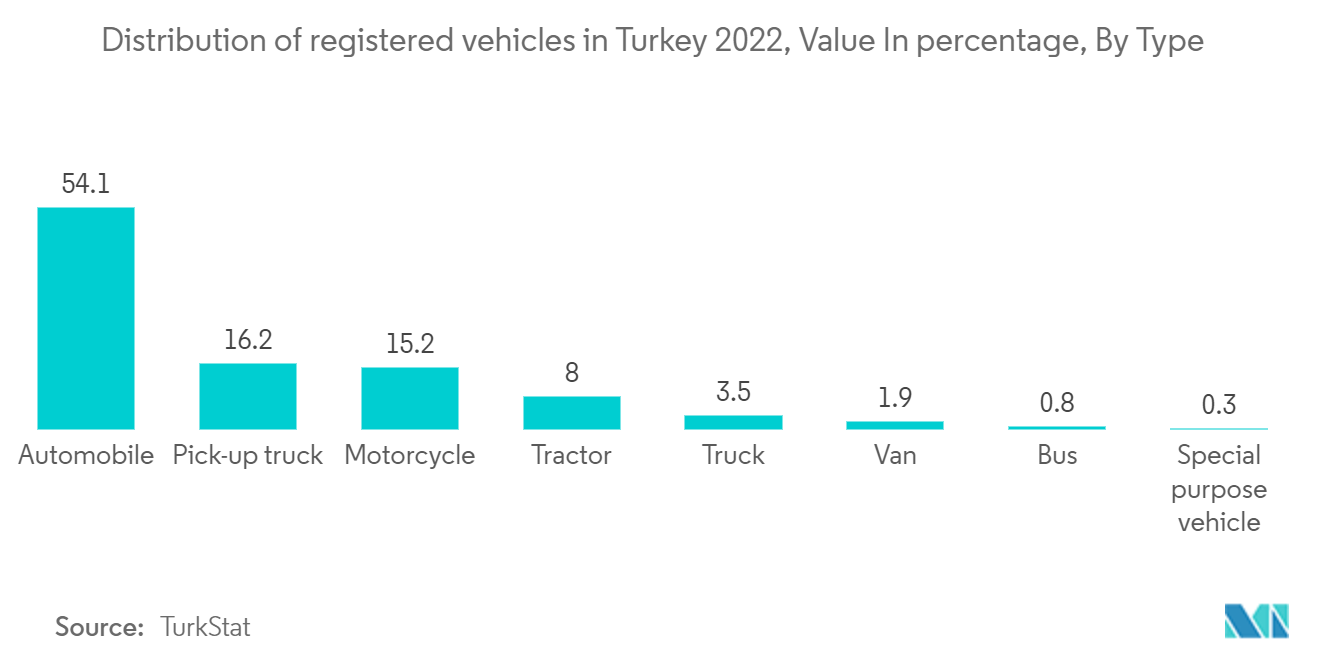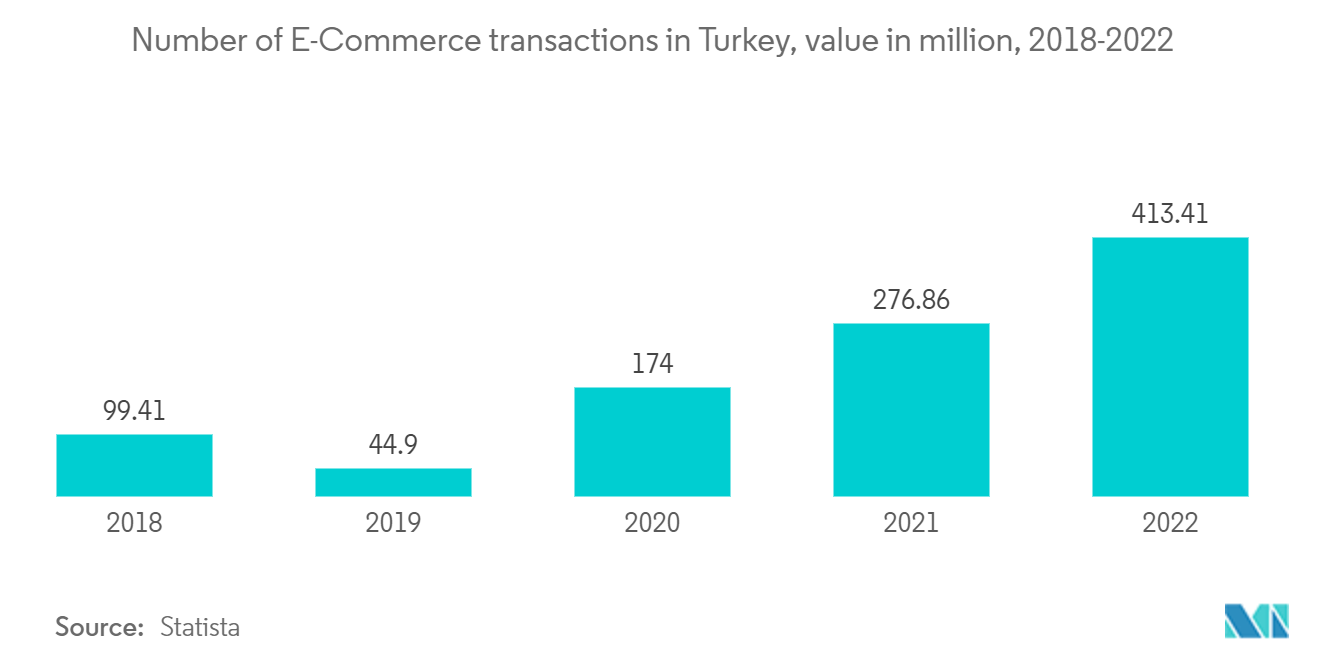Market Trends of Turkey Freight and Logistics Industry
This section covers the major market trends shaping the Turkey Freight & Logistics Market according to our research experts:
Expansion of road network
The manufacturing and automotive industries have been the primary driving force for the growth of the logistics industry in Turkey. The manufacturing sector contributed to almost 22.0% of the country's GDP. The main source of Turkey's exported goods has been the machinery and equipment manufacturing industry.
Turkey is the thirteenth major automotive producer in the world and the fifth-largest in Europe, with a 78.0% average export rate. Transport costs make up a significant portion of the final product cost for domestic manufacturers in these sectors. As a result, roadways are preferred over any other mode of freight transportation. More than 85% of domestic freight is transported through roads in Turkey, the second-largest market sector with 5% of total freight volume. The volumes have been on a constant increase since 2010.
The Turkish road network has been vital to the growth of the country's logistics industry. The country is implementing various projects for rail freight corridors, coastal freight corridors, and international highway corridors to become a leading logistics market. Additionally, projects like the much-anticipated Belt and Road initiative (BRI) by China and the Middle Corridor Initiative (MCI) by Turkey will increase Turkey's logistics sector by increasing yearly government investments in the country's infrastructure, including the expansion of airports and seaports.

Growth of E-Commerce Sector
Despite the depreciation of the Turkish currency and the ongoing impacts of the pandemic, Turkey's e-commerce business is expanding at a far faster rate than in previous years. In Turkey, the share of e-commerce in total retail sales increased from 0.6% in 2010 to 7.8% in 2021. Turkish e-commerce companies are growing internationally. For instance, three e-commerce companies reached a billion-dollar value last year and became unicorns.
Compared to the previous year, the number of leasing transactions in the industrial and logistics sectors more than doubled. The short-term warehousing demand caused by the COVID-19 epidemic is the primary factor driving transactions. The pandemic increased customer demand for e-commerce, which was already rising. The increase in leases in the logistics sector was also proportional to the increase in customer demand.
Turkish e-commerce sites such as Trendyol, Hepsiburada, and Getir have grown dramatically in recent years. As a result, Istanbul has been named one of the top 20 of the world's 100 best ecosystems for entrepreneurs in the e-commerce and gaming industries. The top four factors influencing Turkish consumers' decision to shop online in the Middle East and Africa are better product variety (71%), lower prices (68%), time savings (67%), and faster shopping (58%).


